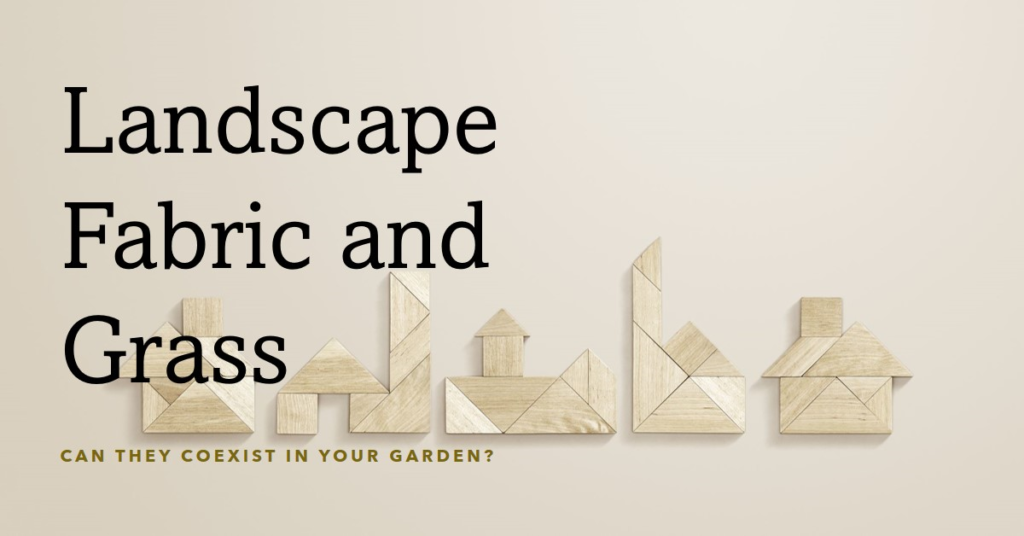
Table of Contents
- Introduction: What is Landscape Fabric?
- The Appeal of Using Landscape Fabric
- Landscape Fabric and Grass: A Complex Relationship
- The Process: Applying Landscape Fabric Over Grass
- Potential Drawbacks and Considerations
- Alternatives to Landscape Fabric
- Combining Methods for Optimal Results
- Case Studies: Success and Challenges
- Conclusion: Making an Informed Choice
- Final Thoughts
Introduction: What is Landscape Fabric?
Landscape fabric, also known as weed barrier fabric, is a versatile material commonly used in gardening and landscaping. Made from woven or non-woven polypropylene, this fabric is designed to reduce weed growth while allowing water and nutrients to penetrate the soil. Its primary function is to create a barrier that prevents weed seeds from germinating and emerging through the soil surface.
The Appeal of Using Landscape Fabric
Gardeners and landscapers favor landscape fabric for its effectiveness in minimizing weed invasion. By reducing the need for frequent weeding, it offers a low-maintenance solution for garden care. Additionally, it helps in soil moisture retention, reducing the frequency of watering. The fabric also acts as a barrier against soil erosion, maintaining garden structure and aesthetics.
Landscape Fabric and Grass: A Complex Relationship
How Landscape Fabric Interacts with Grass
Landscape fabric can significantly impact grass in your garden, both positively and negatively. When placed over grass, the fabric blocks sunlight and restricts airflow, essential components for grass growth. This deprivation leads to the grass eventually dying due to lack of photosynthesis and air circulation. However, the same principles that make it effective for weed control also apply to grass.
Benefits of Using Landscape Fabric Over Grass
One of the primary benefits of using landscape fabric over grass is the effective suppression of unwanted grass in garden beds and around plants. This is particularly useful in areas where grass encroachment can stifle the growth of desirable plants. By eliminating competition for nutrients and water, landscape fabric helps maintain a clean, organized garden.
The Process: Applying Landscape Fabric Over Grass
Preparation and Installation
To ensure the successful application of landscape fabric over grass, proper preparation is crucial. Begin by mowing the grass as short as possible. Remove any debris, such as stones and sticks, to create a smooth surface. Lay the fabric flat over the prepared area, ensuring it overlaps at the edges to prevent gaps where grass could potentially grow through. Secure the fabric with landscape pins or staples to keep it in place.
Mulching for Enhanced Effectiveness
After installing the landscape fabric, cover it with a layer of mulch. Mulch not only improves the aesthetic appeal but also adds an extra layer of protection against weeds. Organic mulches, such as wood chips or straw, decompose over time, enriching the soil with nutrients. Inorganic mulches, like gravel, provide a durable, long-lasting cover that requires minimal maintenance.
Potential Drawbacks and Considerations
Soil Health and Aeration
While landscape fabric is effective in weed and grass control, it can negatively impact soil health over time. The fabric can restrict the movement of beneficial organisms, such as earthworms, that aerate the soil. This can lead to compacted soil, reducing its fertility and hindering plant growth. Regular monitoring and soil amendments can mitigate these effects.
Longevity and Maintenance
Landscape fabric is not a permanent solution. Over time, the fabric can degrade, especially when exposed to sunlight. Weeds may eventually penetrate the fabric, necessitating replacement or additional layers. Regular maintenance, such as checking for tears and ensuring the fabric remains covered with mulch, is essential to prolong its effectiveness.


Alternatives to Landscape Fabric
Organic Mulching
For gardeners concerned about the long-term impact of landscape fabric on soil health, organic mulching presents an attractive alternative. Materials such as straw, leaves, and grass clippings can suppress weeds and improve soil quality as they decompose. Although more labor-intensive, organic mulching provides a sustainable option that benefits the soil ecosystem.
Manual Weeding and Ground Covers
Manual weeding, though time-consuming, is another alternative to landscape fabric. It allows for precise control over unwanted vegetation without compromising soil health. Additionally, planting ground covers like clover or creeping thyme can create a natural barrier against weeds while enhancing garden biodiversity.
Combining Methods for Optimal Results
Integrated Weed Management
Combining landscape fabric with other weed control methods can yield optimal results. For instance, using fabric in high-maintenance areas and organic mulching elsewhere can balance weed control with soil health. Regularly rotating these methods can prevent soil degradation and maintain garden vitality.
Strategic Planting
Strategic planting can also complement the use of landscape fabric. Placing dense, low-growing plants around desired plants can create a natural weed barrier. This method reduces the reliance on landscape fabric and promotes a healthier garden ecosystem.
Case Studies: Success and Challenges
Successful Applications
Many gardeners have successfully used landscape fabric to create tidy, low-maintenance garden beds. For instance, a vegetable garden surrounded by landscape fabric and mulch can thrive with minimal weed intrusion. Similarly, ornamental gardens benefit from the clean, weed-free appearance provided by the fabric.
Common Challenges
However, challenges such as fabric degradation and soil compaction can arise. In some cases, gardeners have found that weeds eventually penetrate the fabric, necessitating additional maintenance. Understanding these potential pitfalls can help gardeners make informed decisions about using landscape fabric in their gardens.
Conclusion: Making an Informed Choice
Landscape fabric offers a practical solution for weed and grass control in gardens, but it is not without its drawbacks. By understanding how it interacts with grass and considering its impact on soil health, gardeners can make informed decisions about its use. Combining landscape fabric with other methods and regularly maintaining the garden can enhance its benefits while mitigating potential downsides.
Final Thoughts
In conclusion, landscape fabric can effectively kill grass in your garden, providing a clean, organized appearance and reducing maintenance efforts. However, it is essential to balance its use with considerations for soil health and longevity. By exploring alternatives and combining methods, gardeners can achieve a thriving, beautiful garden.



